Peruvian Desserts From Alfajores to Mazamorra
38 min read Explore Peru’s sweetest traditions—from buttery alfajores to silky mazamorra morada—with cultural origins, key ingredients, and serving tips that bring Lima’s bakeries and street stalls to your kitchen. October 07, 2025 12:08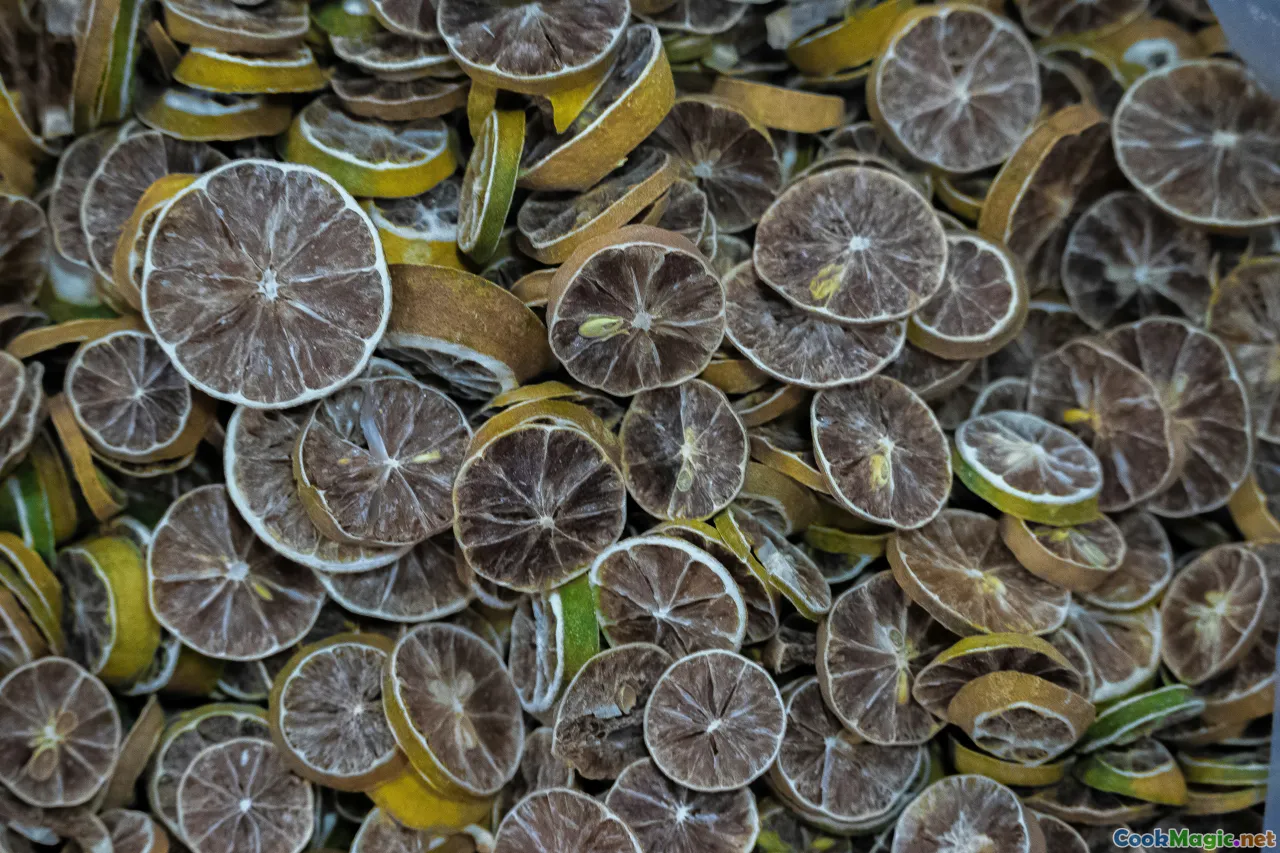
The first spoonful of mazamorra morada always brings me back to Lima in October—the city wrapped in violet scarves of incense, streets perfumed with clove and cinnamon, and the soft hush that falls when the purple Nazarene passes. In that moment, a paper cup of purple corn pudding—steaming, glossy, studded with prunes and quince—is more than a dessert. It is a fixed point in a constellation of memories: my grandmother’s kitchen with its aluminum pots, the rustle of wax paper around a fragile alfajor bought at a corner panadería, the pull of a warm picarón ring between my fingers, stringing syrup like amber silk.
Peruvian desserts are a chorus of textures and temperatures, of pre-Columbian ritual and colonial improvisation, of immigrant craft and home-cooked devotion. They’re also a challenge: how do you explain the sigh in a “Suspiro a la Limeña” without falling into cliché? How do you account for the alchemy of purple corn—the way it stains your wooden spoon and your heart in the same hue? Today, let’s wander from alfajores to mazamorra, tasting the country’s sweets with the curiosity of a cook and the appetite of someone who knows that sugar can be a language.
A Sweet Tapestry Woven Across Centuries

Peru’s dessert culture isn’t a single thread; it’s a braid. Long before cane sugar arrived, Andean cooks already coaxed sweets from nature: honey from native bees, syrups from algarrobo (carob) pods, fruits dried in the highland sun. Maize—so many colors and textures—thickened porridges and drinks, including the ancestors of our modern mazamorras. With the Spanish came sugar and the convent kitchens that perfected manjar blanco (a milk jam of patience and fire), plus almonds, sesame, wheat, and citrus. Africans introduced techniques of frying and syrup-making that still shape our picarones and turrones. Later, Italians and French refined pastry work, and Chinese and Japanese immigrants layered in their precise touch—a lightness of hand, a reverence for fruit—felt today in the way chefs temper sweetness and honor texture.
You can chart this history by season. October is purple—Señor de los Milagros processions, turrón de Doña Pepa bright with sprinkles, mazamorra steaming in paper cups. Summer tilts toward fruit: chirimoya chilled beneath a snowfall of orange juice, lúcuma spun into ice cream the color of sunrise, maracuyá whispering acidity into mousses. And always there’s manjar blanco, the country’s sweet currency, slipped between cookies, poured over crepes, hidden in cakes like a love letter under a pillow.
Alfajores: Butter, Cornstarch, and a Dusting of Memory

It’s impossible to eat an alfajor politely. The moment your teeth meet that fragile cornstarch crumb, it gives way in a puff of powdered sugar that dusts your shirt and the conversation. Then comes the hush: that lick of manjar blanco, cooked low and slow until the milk’s edges brown and the sugar turns to toffee and hay.
Lima’s panaderías have personalities expressed through alfajores. In San Isidro, a polished bakery pipes neat spirals of manjar, sandwiches them with delicate maicena biscuits, and sifts just enough sugar to highlight the edges. In Barranco, a family shop packs generous spoonfuls between sturdier cookies and rolls the sides in coconut or crushed pecans—a touch borrowed from older recipes. At markets like Surquillo No. 1, you’ll find rustic alfajores sold by weight in tins, each one slightly different, like cousins at a reunion.
There are regional and stylistic variations worth chasing:
- Maicena alfajores: soft, short, intensely tender—thanks to cornstarch—these melt upon contact. Their manjar is often smooth, amber, with a whiff of vanilla bean.
- Arequipe-style: a nod to neighboring influences, featuring a deeper, more caramelized manjar and slightly crisper cookies.
- Honey-rolled alfajores: the edges brushed in light syrup and kissed with coconut, a street-sweet sensation.
Making them at home is a study in restraint. Too much flour and the cookie toughens. Too hot an oven and the edges color before the centers set. The dough should feel like cool butter fallen into sand—pliable, barely cohesive. Chill it so it remembers its shape. Roll between sheets of parchment to a precise thickness: 3–4 millimeters is classic; thinner for the whisper-soft versions. Bake until the bottom just blushes. When filling, the manjar should hold a peak, not ooze; a quick chill in the fridge tightens it. Sandwich, press lightly, then snow them under sugar and wait, if you can, a few hours so cookie and filling become one voice.
Where to try: El Bodegón in Miraflores makes a nostalgic, faithful version. San Antonio (the city’s beloved café chain) offers consistently good alfajores, perfect with a café pasado. And travelers to Chiclayo should sample King Kong San Roque’s miniature alfajores—prelude to a larger Lambayeque legend you’ll meet later.
Picarones: The Golden Rings of Twilight
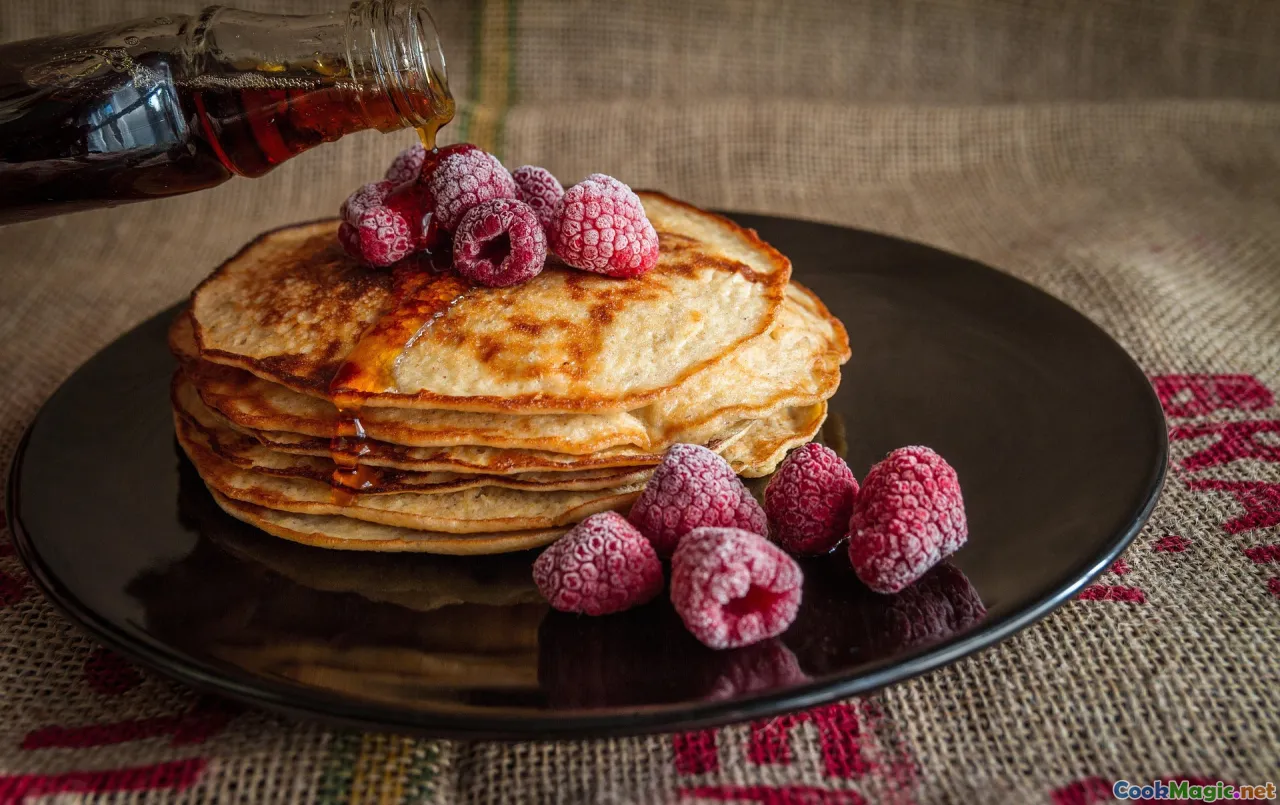
Near the Puente de los Suspiros in Barranco, twilight smells like chancaca syrup—brown sugar laced with orange peel, cinnamon, clove, and a hint of star anise. Vendors stand behind vats of shimmering oil, their hands slicked with sweet dough the color of squash blossoms. With a practiced flick, they form rings—holes punched with a thumb—and slide them into oil where they puff and bronze. The rhythm draws a crowd: sizzle, flip, drip. A ladle of syrup completes the ritual—amber rivulets slipping over ridges, pooling on the plate.
Picarones are older than they look. Their DNA carries African fritter techniques, Spanish buñuelo inspirations, and Andean ingredients: camote (sweet potato) and zapallo macre (squash) in the dough. The result is elastic within, crisp at the edges, with that faint vegetal sweetness that makes you reach for a second before you’ve swallowed the first.
How to make them at home (in brief):
- Steam and mash equal parts camote and squash until silky. Cool.
- Build a sponge: dissolve yeast with a pinch of sugar in warm water; add flour until it’s pourable and foamy. Combine with the mash, more flour, a touch of aniseed, and salt. The batter should slide, not plop.
- Let it rise until a finger pressed into the surface leaves a slow-filling dimple.
- Prepare chancaca syrup by simmering panela with cinnamon sticks, cloves, orange peel, and a splash of water until glossy and thick enough to coat a spoon. Strain.
- Fry in hot, steady oil (about 180°C). Use wet fingers to stretch rings and slip them in. Flip when bronzed. Drain, then baptize with syrup while still hot.
Where to try: Parque Kennedy’s evening stands in Miraflores, the Surquillo market’s busiest corner, and the slope near Barranco’s bridge are reliable. You’ll know you’ve found a good stand by the sound of frying oil running like a clean stream and the density of locals waiting without impatience.
Suspiro a la Limeña: A Whisper That Lingers

It was a poet who named it—José Gálvez Barrenechea—in honor of his wife Amparo Ayarza’s creation in the mid-19th century: “Suspiro a la Limeña,” the sigh of a woman from Lima. The dessert lives up to such romance. At the base sits manjar blanco fortified by cream—milk reduced slowly with sugar until it hums caramel and hay; sometimes kissed with vanilla, sometimes with a micro-grating of orange zest. On top floats a meringue that’s not bland fluff but a negotiation between air and wine: Italian-style, stabilized with a thread-stage syrup, and perfumed with Oporto or another fortified sweet wine.
The best spoonful happens when you pierce the meringue, slide through to the warm manjar, and pull both into the light: cool and warm, aerated and dense, sugar and cream braided. A dust of cinnamon ends the phrase.
Cooks’ notes:
- The manjar base: evaporated milk and condensed milk are common in modern kitchens, though old-school cooks start with fresh milk and sugar. Low heat is law. Stir with a wooden spoon, scraping the bottom in continuous figure-eights. Stop when the bubble pattern thickens and the mixture leaves a clear trail that closes slowly.
- The meringue: bring sugar and a splash of sweet wine to 118°C for a classic Italian meringue. Pour in a thin ribbon into stiff, frothy egg whites while the mixer runs, then whip to glossy peaks that hold but don’t squeak. The wine’s perfume should be ghostly, not boozy.
- Assembly: warm base, cool meringue. Spoon or pipe the meringue on top, dust with cinnamon. Serve the same day so the meringue holds its silk.
Where to find a perfect sigh: El Señorío de Sulco in Miraflores respects the classic; El Bodegón keeps it soulful; many neighborhood menus—menús criollos in Lince or Pueblo Libre—offer versions that taste like grandmothers. Don’t overlook small cafés; more than once I’ve been floored by a flawless suspiro served in a no-name glass at a market lunch counter.
Mazamorra Morada: Purple Corn Pudding, A Bowl of Andean Twilight

You smell it before you see it—cinnamon steam, clove breath, the faint fruit-leather aroma of dried prunes. Then you notice the color: not just purple, but purple that edges into black, the way the sky does just before stars decide to show themselves. Mazamorra morada owes its soul to maíz morado, an Andean corn whose cobs blush like bruised plums and release anthocyanins that paint everything they touch.
The ritual begins with a pot: purple corn cobs snapped and simmered with pineapple cores, apple peels, cinnamon sticks, cloves, maybe a shard of quince if you’re lucky. The perfume fills the house like a holiday. Strained, sweetened with chancaca or sugar, the liquid then returns to the pot with chopped pineapple, prunes, and sometimes guindones (dried plums), apricots, or membrillo (quince). The thickening is where families differ: sweet potato starch is traditional; potato starch or cornstarch is common. Whisked in a thin slurry, it turns the brew glossy and voluptuous, heavy enough to mound on a spoon but not to resist it.
Eat it hot on a chilly evening, cinnamon dust raising steam that fogs your glasses. Or eat it cool, with its wine-jelly wobble, alongside arroz con leche in the classic combinado—striped in a glass like a candy shop memory.
October is the season when mazamorra becomes a map: from the Church of Las Nazarenas, where the Señor de los Milagros departs on processions, vendors line Avenida Tacna with vats as wide as children are tall. Each stand has a secret, they say: a pinch more clove, a longer steep on the corn, or the restraint to never over-thicken. Tasting them becomes a pilgrimage within a pilgrimage.
At home, heed two rules: patience during the initial simmer (an hour at least; two is better) and a slow hand when adding starch. If it clumps, you’ll hear the complaint in every bite. If it’s thin, re-wet a bit of starch and reheat gently. The texture should feel like a hug you can chew.
King Kong de Manjar Blanco: Lambayeque’s Monumental Sweet

Travel north to Lambayeque and dessert serves in architecture. King Kong is a stacked alfajor taken to triumphant excess: thick biscuits—more like shortbread slabs—are layered with manjar blanco, pineapple jam, and sometimes fig jam and a paste of peanuts. Slice it and the cross-section looks like a geological survey of sugar. Each layer has its voice: the cookie’s butter and crumb, the manjar’s dairy-rich chew, the pineapple’s glint of acid, the peanuts’ earthy bass.
San Roque is the brand outsiders recognize; their factory in Lambayeque is a pilgrimage for sweet-toothed travelers who want to see the bricks assembled. But there are family bakeries—Tumy, Buen Día—where the King Kong feels less uniform, more handmade, and sometimes transcendent. Eaten with coffee, it’s a breakfast you’ll defend if anyone judges. Carved into slivers after dinner, it becomes a peace offering.
Why “King Kong”? Local lore ties the name to the 1930s, when the film made its way to Peru and anything outsized earned the nickname. But the technique stems from older alfajor traditions stretched by Lambayeque’s boldness and the region’s love of pineapple preserves.
Turrón de Doña Pepa: Devotion and Sesame Honey Fingers

Turrón de Doña Pepa tastes like faith you can hold. October in Lima means purple processions and trays of turrón stacked in bakery windows, their surfaces striped in sticky chancaca syrup and confettied with grageas—rainbow sprinkles that pop like tiny fireworks.
The story belongs to Josefa Micaela Vilca, a cook from Cañete known as Doña Pepa. Plagued by an ailment that left her arms weak, she sought the Señor de los Milagros in the 18th century and found relief. In gratitude, she created this offering: bars of anise-scented dough, baked, then mortared together with spiced chancaca syrup—a dessert whose construction feels as ceremonial as its inspiration.
The dough is unusual. You cream butter with egg yolks and a whisper of anise liqueur or crushed seeds, work in flour gently so it stays tender, then shape into thick rods or lattice-like strips. Baked, they’re golden and fragrant. The syrup—made like a cousin to the one for picarones, but denser and more perfumed—acts as both glue and glaze. As it sets, the bars soften slightly without losing their structure. The sprinkles are more than decoration; they’re a civic smile.
Around the routes of the October processions—especially near the Church of Las Nazarenas—temporary stands sell turrón by the slice. Bakeries across Lima push out trays, their storefronts perfumed with anise and orange peel. A good turrón holds together but isn’t stubborn; the syrup threads when you cut it; the bite yields with a soft, fragrant crackle.
Chirimoya Alegre, Lúcuma Everything, and the Secret Life of Peruvian Fruit

Peru’s fruit aisle is a dessert cookbook. Chirimoya—custard apple—splits to reveal creamy lobes that smell like pear’s dream of vanilla. “Chirimoya alegre” is the simplest dessert I know: chunks of chirimoya splashed with fresh orange juice. The acid brightens the custard, the perfume blossoms, and if a drop of pisco or port finds its way in, no one complains. Serve it very cold in a tall glass, and you’ll understand why the name means “cheerful chirimoya.”
Lúcuma isn’t subtle. Its flesh is ocher, its perfume a mix of maple and sweet potato, its texture a little dry—until it’s churned with milk into ice cream. Lúcuma ice cream is a Peruvian rite of passage, as ubiquitous as vanilla but more opinionated. Beyond helado, you’ll find lúcuma mousses topped with chocolate shards, brownies layered with lúcuma frosting in cafés, and suspiro a la limeña variations where the manjar base is scented with lúcuma paste. The fruit’s high starch loves dairy’s warmth.
Then there’s maracuyá (passion fruit), whose sour spark cuts through creamy desserts like a bright knife. A drizzle of maracuyá coulis over arroz con leche changes the dish entirely, its seeds popping like punctuation. Guanábana (soursop) becomes an ethereal mousse, palta (avocado) sneaks into batidos, and algarrobina, the carob syrup of the north, anchors cocktails and puddings with a molasses-like bass.
If you’re cooking abroad, seek frozen pulps or dehydrated powders. Lúcuma powder behaves beautifully in ice creams and sponge cakes. Chirimoya is more fragile, but canned pulp can work for shakes and semifreddos. Maracuyá puree is a pantry savior: a teaspoon turns whipped cream into summer.
From Picanterías to Haute Cuisine: How Peruvian Pastry Evolved
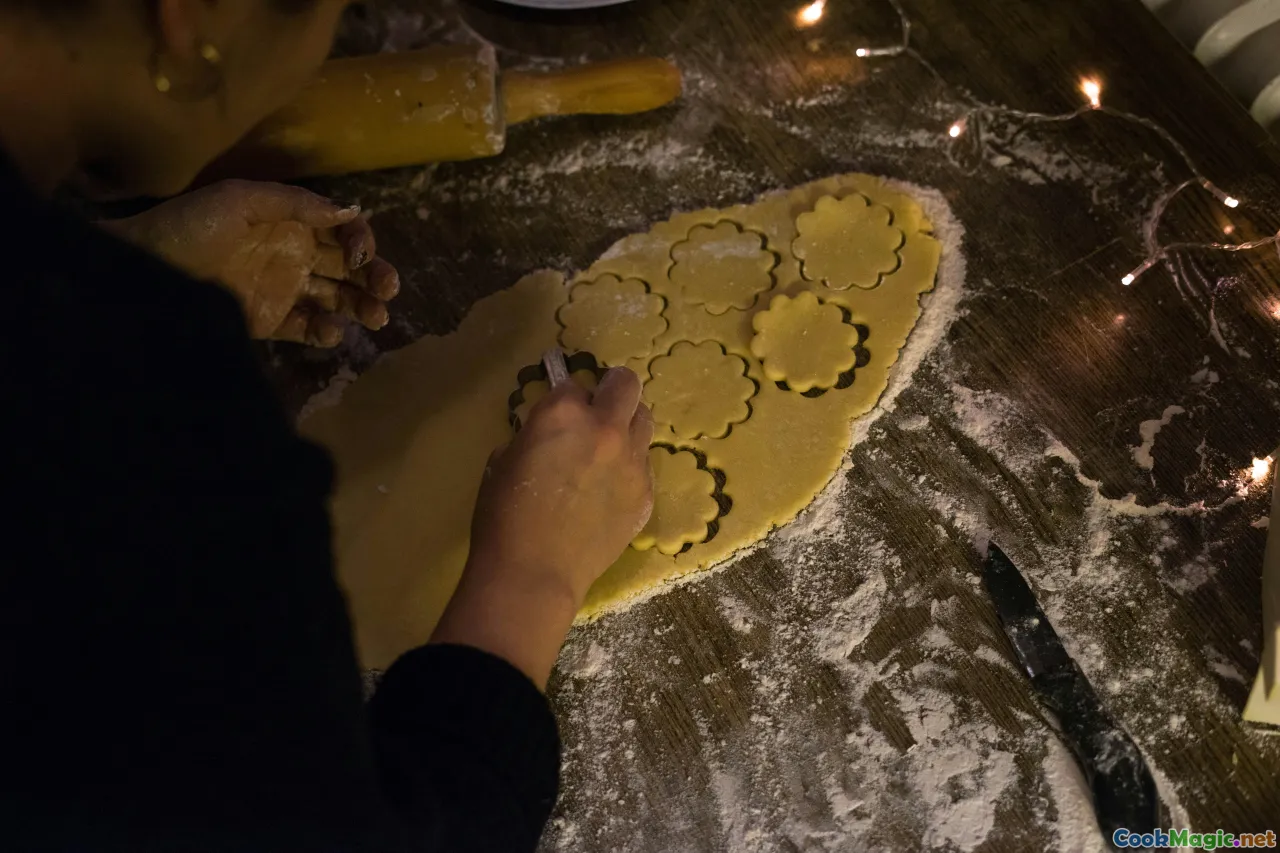
Dessert in Peru didn’t always arrive in neat verrines. In Arequipa’s picanterías—the city’s traditional eateries—sweets anchor the midday meal. Queso helado, the region’s star, is not cheese but a whisper of snow scraped into curls from a tin set over ice, flavored with milk, cinnamon, and sometimes coconut. Eaten beneath the arches of Yanahuara or in Cayma’s courtyards, it tastes like childhood drawn with a cinnamon stick.
As criollo cuisine found modern champions, pastry grew confident. The 1990s brought chefs like Gastón Acurio, who treated classic desserts with reverence and a wink—dressing suspiro a la limeña in elegant stemware, giving alfajores bakery-level polish at scale. Contemporary temples—Astrid y Gastón, Central, Maido—now treat dessert as narrative. You might end a tasting menu with cacao from the Amazon in multiple textures, or a lucuma-besotted composition sharpened by citrus ash, or a meditative offering of chicha morada granita atop custards that taste like the Andes at dusk.
What’s notable is the balance. The Peruvian palate appreciates sweetness, yes, but also spice, salt, and perfume. Cinnamon and clove are not shy; orange zest is a faithful friend; evaporated milk has a legacy handhold. Today’s pastry chefs harness those instincts, filtering them through modern technique—stabilized creams, temperature contrasts, plating that nods to terroir without losing the kitchen’s heartbeat.
How to Stock a Peruvian Dessert Pantry

If you want Peruvian desserts within reach, assemble a small altar of ingredients:
- Chancaca (panela): unrefined cane sugar that melts into caramelly syrup with orange peel and spices. Use for picarones, turrón, mazamorra.
- Maíz morado (purple corn): dried cobs or kernels for mazamorra and chicha morada.
- Spices: Ceylon cinnamon sticks, whole cloves, aniseed, star anise. Also vanilla beans or extract, and a few fresh orange and lime peels for perfume.
- Starches: sweet potato starch (ideal for mazamorra), cornstarch for maicena cookies.
- Dairy: evaporated milk and condensed milk are pantry standbys for manjar blanco and arroz con leche.
- Nuts and coconut: peanuts for King Kong layers, shredded coconut for alfajor edges, pecans for garnish.
- Fruit: prunes, dried apricots, quince paste, pineapple in syrup or fresh.
- Liqueurs: Oporto or other sweet fortified wine for suspiro’s meringue; pisco for perfuming syrups; anise liqueur for turrón dough.
- Special treats: lúcuma powder; algarrobina syrup.
Tools that help:
- Heavy-bottomed pot or copper perol for manjar blanco.
- Wooden spoon and heatproof spatula for constant stirring.
- Candy thermometer for syrups and meringues.
- Fine strainer for spice-infused liquids.
- Piping bags for tidy suspiro tops and alfajor fillings.
Techniques that Make or Break
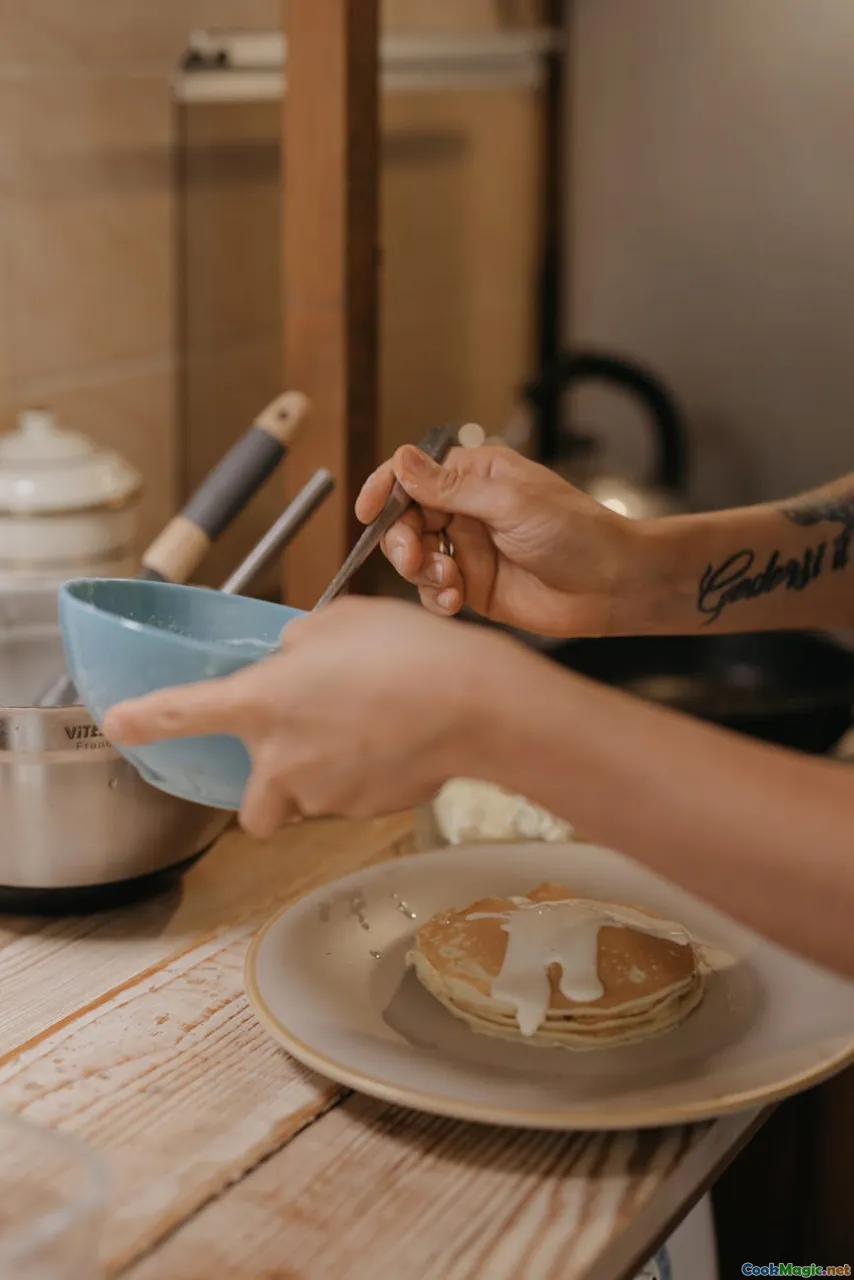
- Syrup stages: For picarones and turrón syrups, cook until thick enough to coat a spoon and form a lazy thread when lifted—about 104–106°C if you’re using a thermometer. For Italian meringue, aim for 118°C.
- The fragrance factor: In syrups, add orange peel late so the oils stay bright; fish it out before it turns bitter.
- Manjar patience: Milk sugars brown slowly. Keep heat low, scrape constantly, and trust your nose. If it smells nutty rather than burnt, you’re winning. If it catches, immediately transfer to a clean pot.
- Starch slurry: Always dissolve starch in cold liquid before adding to a hot mixture, whisk while streaming it in, and cook for a few minutes after thickening to erase raw taste.
- Fry temperature control: For picarones, if oil is too cool, rings soak and taste greasy; too hot, they brown before inflating. A test ring should rise to the surface in 2–3 seconds and brown over 90 seconds per side.
- Meringue stability: Whip egg whites to soft peaks before introducing hot syrup. Let it cool slightly before piping.
A Dessert Crawl in Lima: My Walk, One Evening

Start at Surquillo Market No. 1 while the light still leans gold through the stalls. A woman in a white apron ladles mazamorra morada into a plastic bowl, the steam curling around your face even before the cinnamon does. The first spoonful is hotter than sensible; you blow, still burn the tip of your tongue, and grin anyway. Prunes give their leathery chew, pineapple bites back with sweet acid. You feel the sugar spread warmth to your wrists.
Walk down to Miraflores and stop at a café for coffee and an alfajor. Powdered sugar dusts your black shirt. You don’t care. The cornstarch crumb dissolves like a sideways kiss and the manjar remembers a copper pot and a woman humming a bolero.
Dusk tugs you south to Barranco, across the Puente de los Suspiros where couples scratch initials into paint and buskers tune guitars. A picarones stand flares. The vendor plucks rings from oil, drizzles chancaca syrup that tangles into amber threads. You eat them standing, syrup on your wrist, the night turning violet above the bougainvillea.
A short taxi ride delivers you to a criollo tavern. Suspiro a la limeña arrives in a stubborn glass with a ridiculous flourish of meringue. You pierce and scoop: cool sweet, warm sweet, cinnamon sweet. You taste the port like a late note of a song you thought had ended.
End the walk near Avenida Tacna if it’s October. A slice of turrón presses back against your fork, then yields, seeds of anise still fragrant, sprinkles crunching like tiny starlight. You tuck leftovers into a paper bag that turns translucent in places. The bus home hushes along, and Lima smells like clove and the sea.
Recipes in Miniature: Quick Roadmaps

Alfajores de Maicena
- Cream 200 g butter with 150 g sugar; beat in 3 egg yolks and 1 tsp vanilla.
- Sift 300 g cornstarch with 150 g all-purpose flour, 1 tsp baking powder, pinch salt. Fold into butter mix until a soft dough forms.
- Chill 30 minutes. Roll between parchment to 3–4 mm; cut rounds. Bake at 170°C for 8–10 minutes; bottoms barely colored.
- Cool. Fill with manjar blanco (see below). Roll edges in coconut if you like. Dust with powdered sugar.
Manjar Blanco (Stovetop, Quick Style)
- Combine 1 can evaporated milk and 1 can condensed milk in a heavy pot. Cook over low heat, stirring constantly, 30–45 minutes until thick, amber, and pulling away from the sides. Add 1 tsp vanilla off heat. Cool.
Picarones
- Steam and mash 250 g camote and 250 g squash. Cool.
- Bloom 7 g yeast in 120 ml warm water with 1 tsp sugar. Mix with mash, 300–350 g flour, pinch salt, 1 tsp ground anise. Batter should be sticky and elastic.
- Rise until doubled. Fry rings in 180°C oil until golden. Drain.
- Syrup: simmer 300 g chancaca with 200 ml water, cinnamon sticks, cloves, orange peel to a glossy pour. Strain. Drench rings.
Suspiro a la Limeña
- Base: Cook 1 can evaporated milk + 1 can condensed milk with 4 egg yolks over low heat, stirring until thick enough to coat the back of a spoon and leave a trail.
- Meringue: Boil 200 g sugar with 80 ml Oporto to 118°C. Pour into 3 whipped egg whites while beating to glossy peaks.
- Assemble base warm, meringue cool. Dust cinnamon.
Mazamorra Morada
-
Simmer 2 cobs of purple corn (broken) with pineapple core, apple peel, 2 cinnamon sticks, 6 cloves in 2 liters water for 1.5–2 hours. Strain.
-
Add sugar/chancaca to taste; return to boil with diced pineapple, handful of prunes, optional quince.
-
Whisk 80–100 g sweet potato starch with cold purple corn liquid. Stream into simmering pot, stirring until glossy and thick. Finish with lemon juice for brightness. Cinnamon dust to serve.
Beyond the Coast: Regional Sweets You Should Know
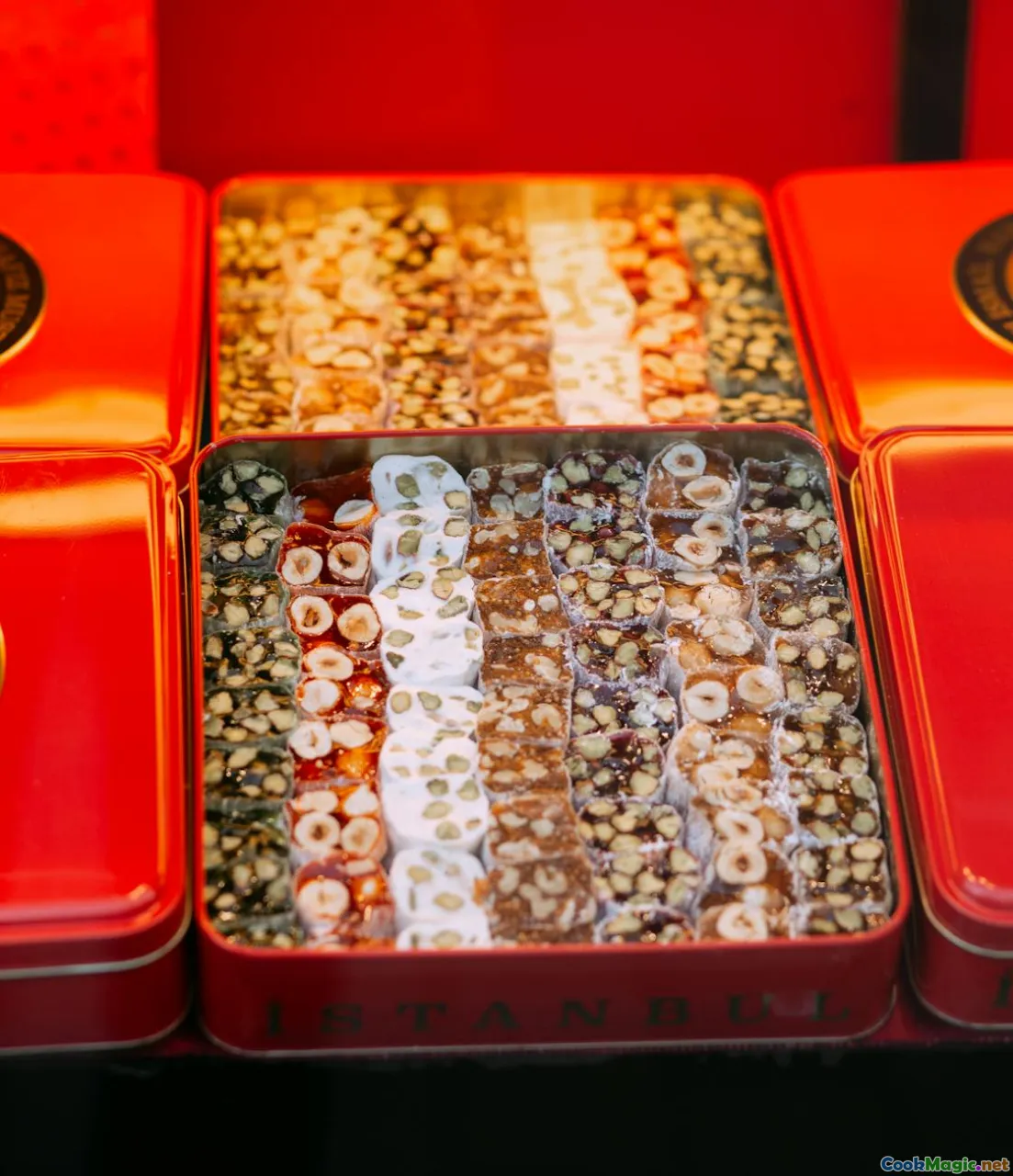
-
Arequipa’s Queso Helado: Milk, sugar, cinnamon, and sometimes coconut, churned old-school in a canister surrounded by ice and salt, then scraped into snow curls. The first mouthful tastes of cinnamon’s warmth and milk’s coolness, the contradiction that makes it unforgettable.
-
Ica’s Tejas and Chocotejas: Dense domes of manjar blanco wrapped around candied lemon peel, pecans, or figs, encased in sugar fondant (tejas) or chocolate (chocotejas). Brands like Helena have refined them; roadside shops along Panamericana Sur sell a dizzying variety.
-
Piura’s Natilla: Imagine a cousin to manjar that leans more towards panela’s dark caramel than milk’s pale sweetness. It’s spreadable, mahogany, and best eaten with bread that can stand up to it.
-
Puno and Cusco’s Api Morado: A warm, thick drink of purple corn sweetened and spiced, sipped in the early morning chill with pastelitos or fried dough. It’s mazamorra’s drinkable sibling and tastes like a sunrise tucked in a thermos.
-
Cajamarca’s Manjarblanco Tradicional: Often firmer, cut into blocks—great with fresh cheese (yes, sweet with salty), a pairing that captures the Andean appetite for balance.
-
Ayacucho’s Turrón Ayacuchano: A regional variation on layered sweets, often denser, sometimes perfumed with local honey and anise.
Pairing Peruvian Desserts with Drinks

- Mazamorra Morada: Pair with a small glass of chicha morada (unsweetened) to echo the spices without adding more sugar, or a dry sparkling wine to lift its weight.
- Alfajores: Black coffee from Villa Rica or Cajamarca cuts through manjar’s dairy sweetness. A sip of pisco (mosto verde if you can) highlights caramel notes.
- Picarones: Emoliente—a warm, herbal street drink—shares the spice spectrum. Or try a late-harvest white wine with acidity to balance syrup.
- Suspiro a la Limeña: Needs restraint. A demi-sec cava or Moscato d’Asti works; even better, a tiny, bitter espresso for a classic sweet-bitter tango.
- King Kong: Black tea with lemon or a nutty oolong to navigate layers without fighting the pineapple jam.
Glossary of Key Ingredients

- Chancaca (Panela): Unrefined cane sugar, sold in blocks; caramel, smoky, mineral-touched.
- Maíz Morado: Purple corn; used in chicha morada and mazamorra; brings color and berry-like aroma.
- Lúcuma: Andean fruit; tastes like maple and sweet potato; best in dairy-based desserts.
- Algarrobina: Carob syrup from northern Peru; molasses-adjacent with a toasty note; used in cocktails and desserts.
- Harina de Camote: Sweet potato starch; gives mazamorra a glossy, clean gel.
- Oporto: Fortified wine employed in suspiro’s meringue; adds grapey perfume.
- Anís: Anise seed or liqueur; perfumes turrón dough and some syrups.
As I write this, a pot on my stove murmurs. Purple corn cobs tumble with cinnamon, my kitchen slowly slipping into October even if the calendar disagrees. Soon I’ll thicken the brew, fold in fruit, and wait for that moment when a wooden spoon leaves a path that closes like a slow breath. I’ll dust two bowls with cinnamon and call someone to the table. We’ll eat in spoons that scrape the curve of ceramic, say “just one more” until we’ve told the truth.
Peruvian desserts are like that: an invitation—simple words with complicated music behind them. A ring of fried dough at twilight. A cookie that collapses into a memory you didn’t know you still had. A sigh, a purple glow. And always, a reason to stay a little longer at the table.









